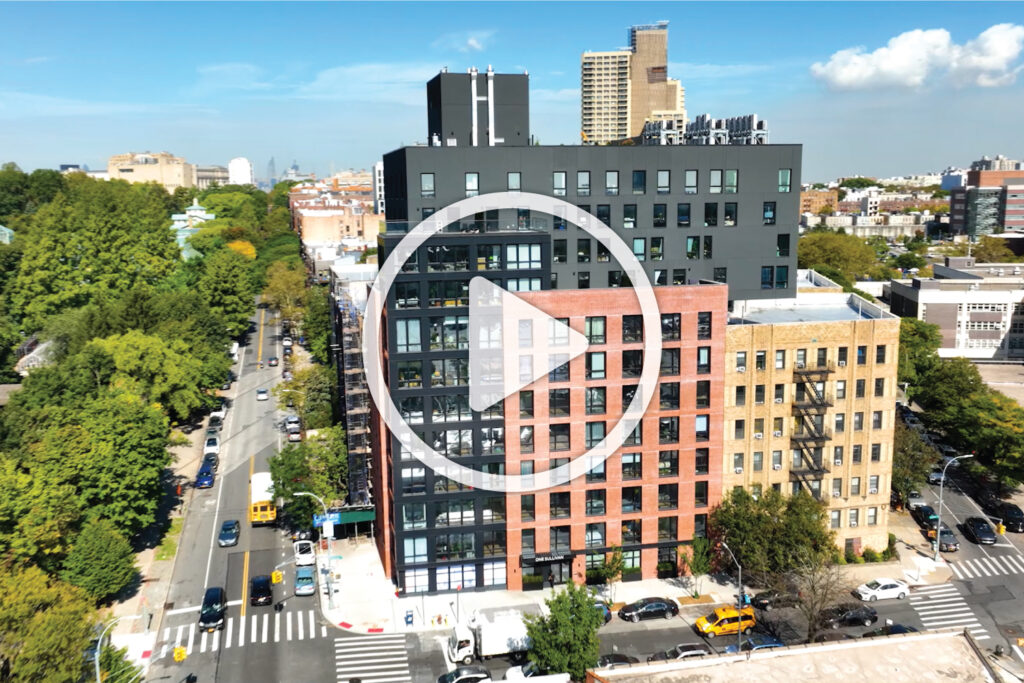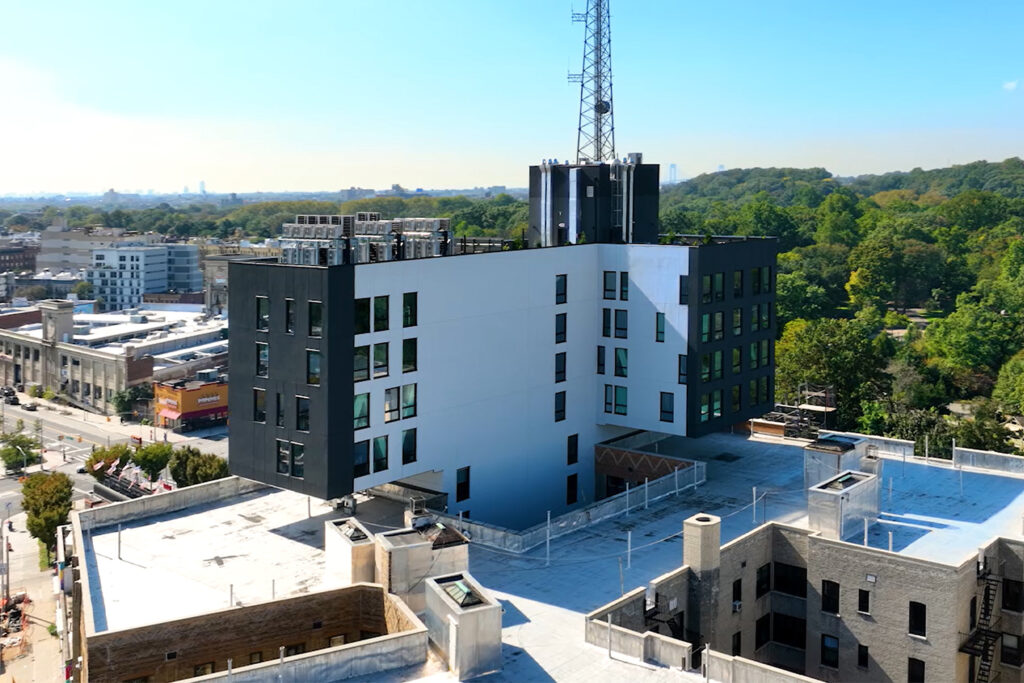Project Name: One Sullivan Place in Brooklyn, NY
Architect: RKTB Architects
General Contractor: Rubin Development and Construction
Structural Engineer: GACE Consulting Engineers
Products Used: SuperLite II-XL 60 insulated with Solarban 60 in GPX Architectural Series Framing

Stellar Views. Natural Light. Usable space. These are the mantras of those involved in real estate. In a city like New York, where the stakes are high and the restrictions are abundant, developers and their architects are always looking for new strategies to realize the maximum potential of their real estate developments. One way to achieve this is with a cantilevered design.
Whether it is due to a zoning height restriction or simply wanting to capitalize on an advantage, developers are adding cantilevers in the higher floors to increase the usable space. Coupled with better views and more daylight, these higher floors become more valuable, which is financially beneficial to the project.
This was the case for One Sullivan Place, a 60,000 square foot, 12-story residential building in Brooklyn’s Crown Heights neighborhood. RKTB Architects, one of BD&C’s Multifamily Architecture Firm Giants, was tasked with designing a building on a corner site across from the Brooklyn Botanic Garden and the Manhattan skyline just above its tree line.
“Building only straight up would not have given us the best ‘bang for the buck’ on this prominent site,” says Nelson Vega, Assoc. Principal at RKTB. “We began exploring strategies for utilizing the full available floor area and for capturing city views of Manhattan and Brooklyn by building high above the Botanic Garden tree line. Those views would help our client to fetch competitive market rental rates,” he adds.
It helped that their client also owned the adjacent property – a six-story, fully occupied apartment building that wrapped around One Sullivan’s corner lot. “We came up with the idea of leveraging available air rights by extending a cantilevered portion of the proposed building over the rooftop of the existing one. This turned out to be a viable option, allowing the project team to maximize both the street frontage and buildable floor area,” says Nelson.
Building sideways with sections hovering in mid-air over a neighboring property is no easy task. First, there are structural challenges. In the case of One Sullivan, the architects worked closely with GACE Consulting Engineers on a solution involving a two-story Warren steel truss spanning 30 feet beyond the property line in both directions. “The truss occupies the 9th and 10th floors, functioning as a tabletop to support the 11th and 12th stories,” says Nelson.
Then there is fire and life safety. Because both the cantilevered building and the adjacent building are at risk if a fire starts from either building, considerations for maximizing life safety and fire protection must be addressed. This is why Section 705.12, Portions of a Building Cantilevered Over Existing Buildings, in the NYC Building Code requires a peer reviewed fire engineering analysis that is acceptable to the commissioner. The analysis should demonstrate that “all portions of the building that cantilever will withstand the anticipated effects of a design fire in accordance with generally accepted fire engineering principles with respect to at least all of the following building elements:
1. The structural supports and frame of the cantilevered portion of the building;
2. The underside projecting assemblies of the cantilevered portion of the building; and
3. The exterior walls and openings on all sides of the cantilevered portion of the building.”
The NYC Department of Buildings further explains the code requirements, submittal procedures and fire modeling methodology in Buildings Bulletin 2017-014.
In the case of One Sullivan, the cantilevered portions extended beyond its lot line and into the neighboring property. Therefore, the perimeter walls of the cantilevers had to match the 1-hour, ASTM E-119/UL 263 fire resistive rated requirements based on a fire modeling study. Because daylight and views were so important for this part of the building, the architects researched possible solutions and came across SAFTI FIRST. After consulting with Rubin Development and Construction, who has worked with SAFTI FIRST in the past, it was determined to be fit.

SAFTI FIRST supplied SuperLite II-XL 60 insulated with Solarban 60 in GPX Architectural Series Framing on all sides of the cantilevered portion of the building from the 9th to the 12th floors. While they may look like openings, they are considered as 1 hour transparent walls by code because these assemblies meet the ASTM E-119/UL 263 fire resistive wall criteria. “This was extremely important to the development, allowing us to enhance the interiors with additional natural daylight and to take advantage of the spectacular skyline views,” adds Nelson.

SAFTI FIRST’s project management and production teams worked with architect and the contractor through the submittal and production phases of the project. At contractor’s request, all of the fire resistive glazing units were fully assembled and glazed in SAFTI FIRST’s manufacturing facility. When they were delivered to the job site, they were craned into the opening and then sealed. This made for a much easier, faster and less labor-intensive installation.
Thanks to the ingenuity of the building team, One Sullivan Place welcomes its new residents with the best that Brooklyn and New York has to offer.
# # #